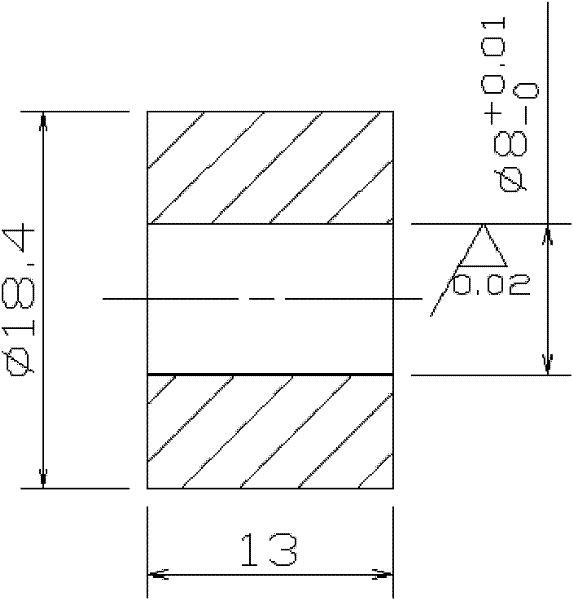Mirror polishing method for complex ceramic surface
A complex surface and mirror polishing technology, which is applied in the field of ceramic complex surface mirror polishing, can solve the problem of high polishing efficiency
- Summary
- Abstract
- Description
- Claims
- Application Information
AI Technical Summary
Problems solved by technology
Method used
Image
Examples
Embodiment 1
[0034] Embodiment 1: The grinding and polishing process of the present invention is adopted, and the specific data are shown in Table 3.
[0035] The mirror-polished parts of the complex surface of structural porcelain are: high-performance 99 alumina ceramic guide discs for high-speed chemical fiber texturing machines, and the arc surface on the circumference requires mirror processing (see figure 1 ).
[0036] See the content of the invention for the carrying tool and diamond abrasive used. The outer dimension of the pre-processed guide disc is φ52 +0.022 , roughness Ra0.2-0.3, polished by three processes (Table 3):
[0037] Table 3 adopts technology of the present invention to polish alumina ceramics
[0038]
Embodiment 2
[0039] Embodiment 2 (comparative example): traditional polishing process, concrete data see (table 4)
[0040] Using the existing traditional polishing method, diamond micropowder abrasives of different particle sizes are applied to the white canvas for four-step polishing, which requires mirror surface. The processed parts are the same as in Example 1, the outer garden of the pre-processed guide plate is φ52 +0.01 Roughness Ra0.2~0.3.
[0041] Table 4 Polishing alumina ceramics by traditional polishing process
[0042]
[0043]
Embodiment 3
[0044] Embodiment 3 (comparative example): the specific data is shown in Table (5), the carrying tool adopts self-made boron carbide emery cloth, and the diamond abrasive adopts a processing method that changes step by step from coarse to fine. The parts to be processed are the same as in Example 1, the outer circle of the pre-loaded guide plate is Φ52+0.02 and the roughness is Ra0.2-0.3.
[0045] Table 5 Comparison of polishing processes for polishing alumina ceramics
[0046]
PUM
 Login to View More
Login to View More Abstract
Description
Claims
Application Information
 Login to View More
Login to View More - R&D
- Intellectual Property
- Life Sciences
- Materials
- Tech Scout
- Unparalleled Data Quality
- Higher Quality Content
- 60% Fewer Hallucinations
Browse by: Latest US Patents, China's latest patents, Technical Efficacy Thesaurus, Application Domain, Technology Topic, Popular Technical Reports.
© 2025 PatSnap. All rights reserved.Legal|Privacy policy|Modern Slavery Act Transparency Statement|Sitemap|About US| Contact US: help@patsnap.com



